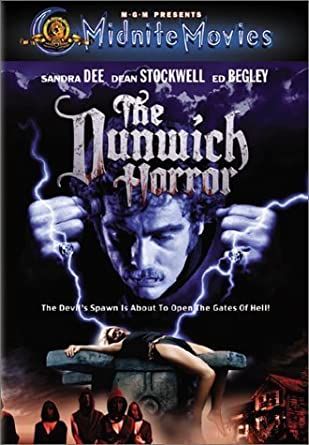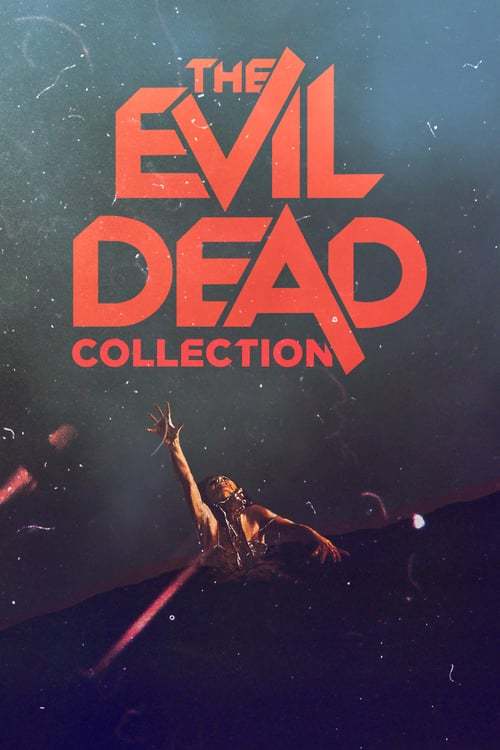What is the Necronomicon, you may ask? It’s an ancient tome that sprung from the nightmarish imagination of H.P. Lovecraft, which he encouraged his peers to use in their literature as well–subsequently, it has become a book that symbolizes evil in horror culture. It continues on now, as an icon of what can come from the supernatural and occult influences of, what could be, an unknown origin of our universe.
So now we get to enjoy a plethora of movies that all have something to do with the Necronomicon–to be clear, this isn’t an exhaustive list of where the Necronomicon appears within pop-culture, but these are some of the most memorable!

The Dunwich Horror (1970)
This movie never got rave reviews, but it did add to the pop-culture relevance to the history of the Necronomicon. Despite its blatant 1970s style, it has a sort of creepy charm to it. This particular mystery is taken from Lovecraft’s novel by the same name in which Wilbur Whateley, a seemingly harmless young man, coerces a female virgin from a California University to be the vessel for the spawn of the devil. It’s worth a watch, even if it’s just to learn more about what the Necronomicon can do when it’s in the hands of someone who wants to destroy the world.

The Evil Dead Franchise
Yeah, we know, the Evil Dead franchise constitutes four movies, a series, as well as a handful of crossover movies, comic books, and more–but we’re going to count it as one for the sake of this list. As far as the Necronomicon is concerned, it is pretty much contained in the four feature films, as well as the television series. This supernatural horror film franchise was the brainchild of Sam Raimi and revolves around the Necronomicon Ex-Mortis, which is referenced as an ancient Sumerian text that systematically targets and possesses its victims. Initially, a group of teenagers who are staying in a cabin overnight, in The Evil Dead (1981); the franchise devolves into a sort of comedic horror hybrid, which suits fans just fine.

Jason Goes to Hell: The Final Friday (1993)
The ninth chapter of the Friday the 13th franchise, where we get yet another dose of our favorite supernatural psycho, Jason Voorhees. We see Jason return from the dead in order to possesses the body of a medical coroner–so we realize that even after his death, we can never escape the fate of Camp Crystal Lake. This movie is one of several interesting crossovers that appears with Raimi’s Evil Dead Franchise–as the Necronomicon and the Kandarian dagger appear within the movie, very briefly. Here’s the thing though and Adam Marcus confirmed it later on–Jason Vorhees is now a deadite, after his mother made a deal with the devil to bring her son back.

Necronomicon: Book of the Dead (1994)
This film is a collection of three terrifying Lovecraft stories brought together as an anthology. In the Cold revolves around a scientist who cannot tolerate warm temperatures. The Drowned tells the story of a man who inherits a dilapidated mansion from his uncle. Whispers concerns two police officers who have to deal with a particular resident of a horrifying subterranean community.

Out of Mind: The Stories of H.P. Lovecraft (1998)
This particular movie never made it to the big screen; in fact, the low budget and actors made this a less refined, yet interesting take on Lovecraft’s original creations. We follow the story of a young man who inherits a book–the Necronomicon–from an estranged uncle, and against his better judgment begins to investigate the content of the book quite intently. After reading from the book, he begins to be haunted by disturbing dreams that are reminiscent of the Lovecraft universe, this leads him to become interested in the writings of the father of cosmic horror himself.

The Theatre Bizarre (2011)
This anthology of horror features a myriad of inexplicable and terrifying stories; part spiraling insanity, part supernatural exploration, Enola Penny is obsessed with what is thought to be a long-abandoned theatre. Acting upon her impulsive curiosity, she sneaks in one night and what she finds in that dilapidated auditorium is a show she could have never expected. This show features six different stories and while it might not be a huge part of the story, there is one entitled “Mother of Toads” which is based loosely on a story by Clark Ashton Smith, a colleague of Lovecraft’s. Smith’s stories regularly featured the Necronomicon and this one was no exception.

Color Out of Space (2019)
Loosely based on the short story by Lovecraft, Color Out of Space is possibly the most successful movie to come out of the body of work of H.P. Lovecraft. This isn’t of course due to a flaw in his stories, so much as an inability to capture the cosmic horror sub-genre for which Lovecraft is responsible. This doesn’t follow the short story that Lovecraft wrote specifically, so it can’t be judged based on those merits, but it does capture the essence of Lovecraft’s cosmic horror. This movie focuses on a secluded farm that is struck by a strange meteorite, the consequences of which are quite disastrous for the family who lives there with the potential of it reaching the rest of the world.

Georgia-based author and artist, Mary has been a horror aficionado since the mid-2000s. Originally a hobby artist and writer, she found her niche in the horror industry in late 2019 and hasn’t looked back since. Mary’s evolution into a horror expert allowed her to express herself truly for the first time in her life. Now, she prides herself on indulging in the stuff of nightmares.
Mary also moonlights as a content creator across multiple social media platforms—breaking down horror tropes on YouTube, as well as playing horror games and broadcasting live digital art sessions on Twitch.
